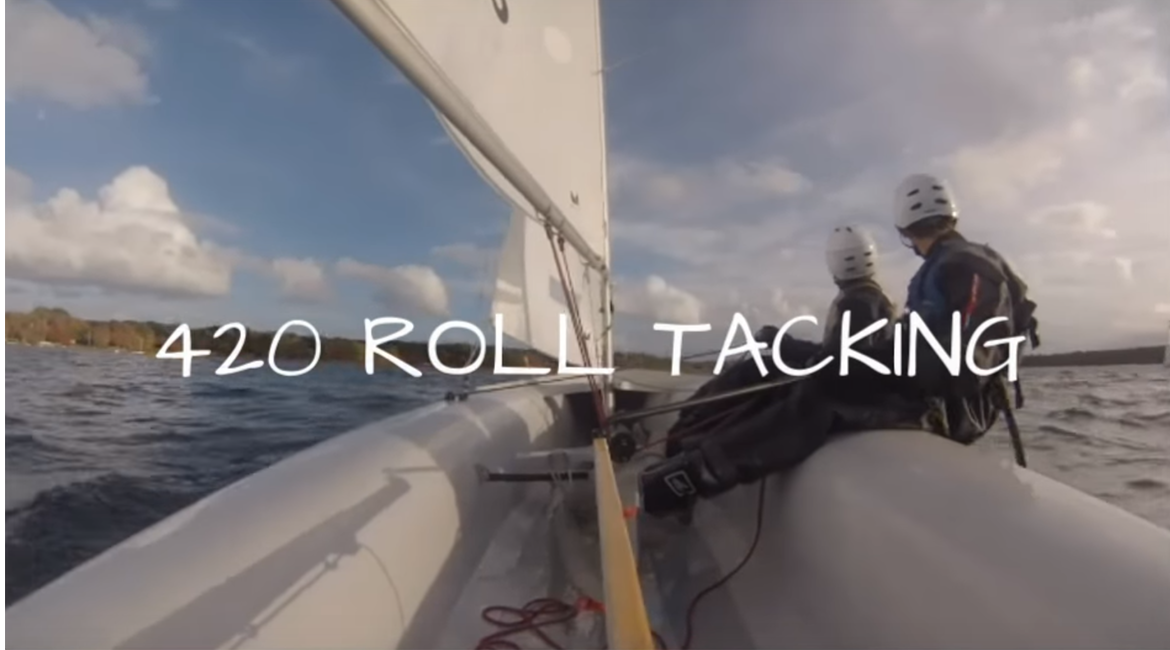High school sailing coach Gary Werden has published a detailed video showing dinghy roll tacking, using the 420. Gary shows three phases of the tack and the elements of each phase. This is the most helpful online video we have found on roll tacking.
Dinghy Roll Tacking Phases and Steps
Initiation
Initiation is from the beginning of the tack to the point the jib starts to back. Key elements:
- Rudder moved slowly from center to edge of the tank, and then to the middle of the tank. Do not move the rudder further than this.
- Mainsheet is trimmed in tighter than close-hauled to preserve speed and assist the turn.
- Crew moves in slightly to uncleat the jib. Werden’s video says not to tighten the jib, but other resources say to tighten the jib just before it begins to luff, to keep it backwinded longer.
- Skipper and crew may lean in a little, but not so much as to induce leeward heel. In a soft chine boat, leeward heel won’t help with the turn much and will lead to slipping. In a harder chine boat, like the X boat or Opti, leeward heel may be more effective.
Turn and Roll
This phase begins when head to wind and ends when you are on the close-hauled heading.
- Rudder and mainsheet remain in the same position as at the end of initiation.
- Lean out to the old windward side when the boat is head to wind – not sooner.
- Skipper and crew must lean out in perfect unison to induce the roll.
Flatten
This phase begins when you are on the close-hauled heading.
- Bring rudder smoothly to center and place tiller extension on the new windward deck to prevent further motion.
- Ease the mainsheet 12-18″ as you cross.
- Ease the jib to a close reach setting and re-cleat it.
- Skipper and crew cross in unison and hike on the new windward side to flatten the boat. Skipper does not yet switch hands and the tiller extension remains behind the skipper’s back. The Werden video does not mention re-trimming the main at this point, but the Zim Sailing Blog, says to begin re-trimming the main at the highest point of the roll.
- Skipper switches hands when boat is flat.
Related Content:
Zim Sailing Blog – explains importance of many of the steps
Optimist Tacking – Video Collection
Avoid Tacking in Lulls – Be Prepared to Tack in Puffs – SailZing
Sailors Helping Sailors
Will you share your knowledge with your related Comments below?



